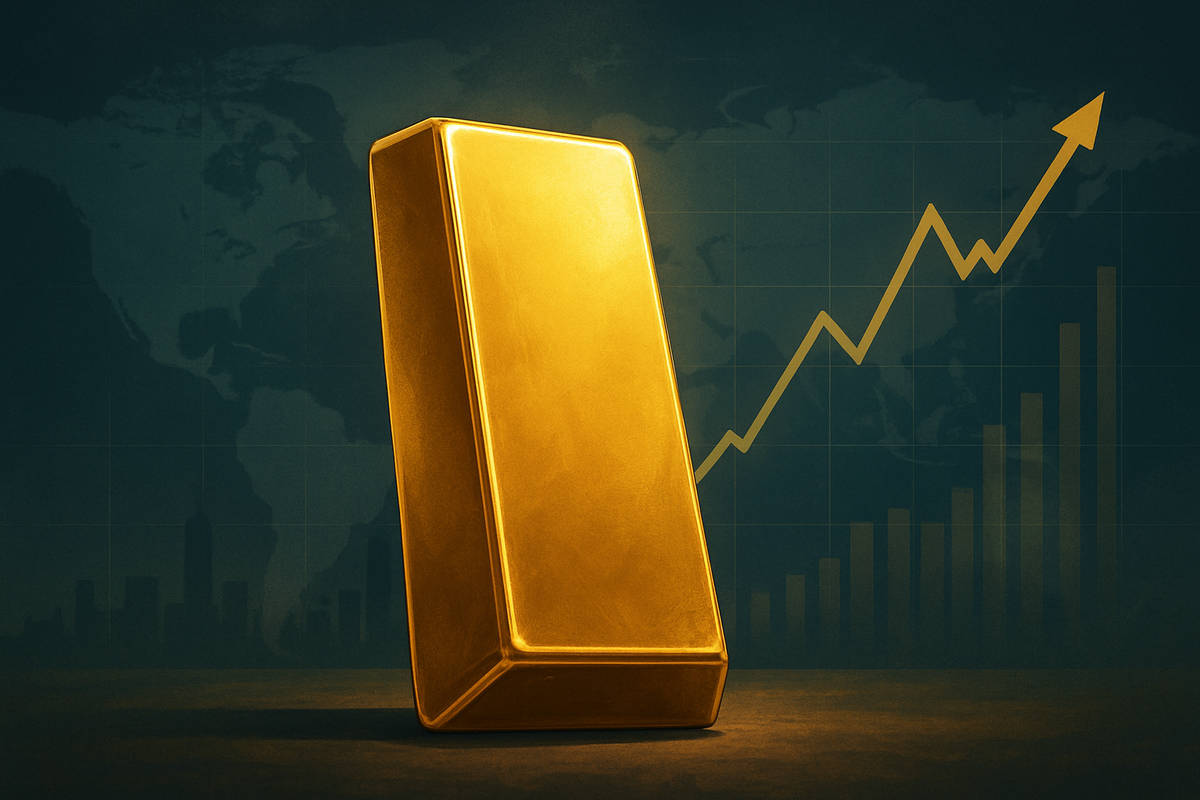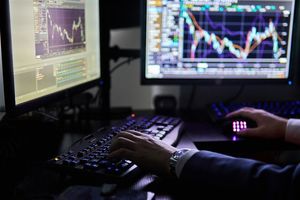
London, UK – October 29, 2025 – In a significant pronouncement for the precious metals market, Natixis, a prominent French corporate and investment bank, has articulated a new, elevated floor for gold prices at $3,000 per ounce. This declaration, made through its esteemed Precious Metals Analyst Bernard Dahdah, comes amidst a period of considerable volatility and heightened investor interest in the yellow metal. While establishing this robust psychological and fundamental support level, Natixis simultaneously suggests that this floor is unlikely to be tested, pointing to strong underlying demand that would emerge long before such a dip.
This analysis arrives as gold prices have already demonstrated remarkable resilience, briefly surpassing the $3,000 mark in intra-day trading earlier this year in March 2025. The current prediction reinforces the bullish sentiment surrounding gold, offering a new benchmark for investors navigating an uncertain global economic landscape. The implications are far-reaching, potentially solidifying gold's role as a cornerstone asset in diversified portfolios and setting new expectations for its future price trajectory.
Gold's New Horizon: A Deep Dive into Natixis's $3,000 Floor Prediction
Natixis's latest research, spearheaded by Bernard Dahdah, sets a definitive new floor for gold at $3,000 an ounce. This prediction, highlighted on October 29, 2025, acknowledges an "ultimate floor" around production costs, estimated at roughly $2,000 an ounce, and even a scenario where prices could theoretically drop to $2,800. However, the core of Natixis's analysis rests on the strong conviction that a decline to the $3,000 mark is improbable. Dahdah posits that significant buying interest, particularly from Chinese investors and a resurgence in jewelry demand, would likely materialize if prices were to fall below $3,400 an ounce, effectively creating a safety net and preventing a deeper descent.
The timeline leading up to this moment has been characterized by a robust gold rally. Gold's historic breach of the $3,000 per ounce threshold in March 2025 was a pivotal event, widely interpreted as a strong psychological signal for the market. This surge was not an isolated incident but the culmination of several powerful drivers: persistent geopolitical instability, unpredictable US economic policies (especially concerning tariffs), and a marked increase in central bank gold purchases – particularly from BRICS nations seeking to diversify reserves and de-dollarize. Furthermore, expectations of sustained inflationary pressures and potential interest rate adjustments contributed significantly to gold's appeal as a safe-haven asset.
The key player in this specific analysis is Natixis, with Bernard Dahdah providing the detailed insights. Their base case scenario projects gold prices to consolidate around current levels, which were approximately $3,996.60 at the time of the article, through 2026, with an expected average of $3,800 per ounce next year. Initial market reactions to gold's sustained strength, particularly after crossing $3,000, have been overwhelmingly positive. Investment inflows surged, with European investors alone adding $3.2 billion to gold exchange-traded commodities (ETCs) in the early months of 2025. This enthusiasm also translated into a significant uplift for gold mining stocks, with major gold miner ETFs experiencing substantial year-to-date gains.
Market Winners and Losers: Navigating Gold's Elevated Plateau
The establishment of a $3,000 gold floor, even if untested, presents a clear picture of potential winners and losers across the financial markets. Gold mining companies are undoubtedly among the primary beneficiaries. Firms like Barrick Gold (NYSE: GOLD), Newmont Corporation (NYSE: NEM), and Agnico Eagle Mines Limited (NYSE: AEM) stand to gain significantly. Higher, more stable gold prices translate directly into increased revenues and improved profit margins, especially for those with lower production costs. This sustained profitability allows for greater capital expenditure, exploration efforts, and potentially increased shareholder returns through dividends or buybacks. Smaller, junior mining companies with promising exploration projects might also find it easier to secure funding and attract investment, as the higher gold price environment makes future production more lucrative.
Conversely, entities that are net consumers of gold, such as some jewelry manufacturers or certain industrial users, might face increased input costs. However, the Natixis report specifically mentions a rebound in jewelry demand if prices fall below $3,400, suggesting that consumers may be willing to absorb higher prices or that manufacturers can pass on costs. Companies heavily invested in assets that perform inversely to gold, such as certain high-growth technology stocks or specific cyclical industries, could see capital flow diverted towards the safe-haven appeal of gold. However, in a diversified market, this effect is often nuanced.
Gold-backed Exchange Traded Funds (ETFs), such as the SPDR Gold Shares (NYSEARCA: GLD) and iShares Gold Trust (NYSEARCA: IAU), are also clear winners. Their value directly tracks the price of gold, and a higher, more stable floor means increased asset under management and sustained investor interest. Financial institutions and wealth managers offering gold as part of their asset allocation strategies will also benefit from its enhanced appeal and perceived stability. The overall effect is a reinforcement of gold's role as a strategic asset, shifting investment flows and recalibrating risk assessments across various sectors.
Wider Significance: Gold's Role in a Shifting Global Order
Natixis's prediction of a $3,000 gold floor fits seamlessly into broader industry trends characterized by increasing economic nationalism, de-dollarization efforts, and persistent geopolitical friction. This isn't merely a price forecast; it's an acknowledgment of gold's re-emerging role as a foundational asset in a world grappling with uncertainty. The sustained central bank buying, particularly from BRICS nations, is a critical component of this trend. These nations are actively diversifying their foreign exchange reserves away from the U.S. dollar, a strategic move that underpins gold's long-term demand. This structural shift in global finance provides a robust fundamental support for gold prices, making predictions of higher floors more credible.
The potential ripple effects extend to various sectors. Competitors in the safe-haven asset space, such as certain government bonds or other precious metals, might find themselves overshadowed by gold's renewed luster. Partners in the gold supply chain, from refiners to logistics providers, will likely see increased activity and demand for their services. Regulatory bodies and policymakers will also be watching closely, as a consistently high gold price could influence monetary policy decisions, particularly concerning inflation management and currency stability. Historically, gold has always served as a barometer of economic health and geopolitical stability. Comparisons to past periods of high gold prices, such as the late 1970s or the post-2008 financial crisis era, reveal similar drivers: inflation concerns, loss of confidence in fiat currencies, and global instability. However, the current landscape, with its unprecedented levels of central bank intervention and the rise of multipolar economic powers, suggests that gold's current rally has unique and potentially more enduring characteristics. The $3,000 floor signifies a new baseline in this evolving global financial architecture.
What Comes Next: Navigating Gold's Elevated Trajectory
The establishment of a $3,000 gold floor, even if unlikely to be tested, sets the stage for several short-term and long-term possibilities in the precious metals market. In the short term, gold prices are likely to consolidate around their current elevated levels, as Natixis projects an average of $3,800 per ounce next year. This consolidation period could see minor corrections, but strong underlying demand, particularly from strategic buyers, is expected to prevent any significant downward pressure. Investors might witness increased hedging activities and a re-evaluation of portfolio allocations as they adjust to gold's new perceived stability and higher baseline value.
Looking further ahead, the long-term outlook for gold remains robust. The fundamental drivers—geopolitical tensions, central bank diversification, and inflationary pressures—are not expected to dissipate quickly. This suggests a continued upward bias for gold prices, with potential strategic pivots required for market participants. Gold miners, for instance, might shift their focus from cost-cutting to optimizing production and expanding reserves, leveraging the higher price environment. For investors, this creates opportunities in gold-related assets, including physical gold, gold ETFs, and well-managed gold mining stocks. Challenges could arise from unexpected shifts in monetary policy or a sudden resolution of global conflicts, which could temporarily dampen gold's appeal. However, the prevailing sentiment points towards continued demand. Potential scenarios include gold breaking past the $4,000 mark if inflation proves more persistent than anticipated, or a slight retreat if global stability unexpectedly improves, though the $3,000 floor is expected to hold firm.
A Golden Anchor: Summarizing the New Market Reality
Natixis's bold prediction of a $3,000 gold floor, unlikely to be tested, marks a significant recalibration of expectations in the precious metals market. The key takeaway is the solidification of gold's role as a premier safe-haven asset, driven by a confluence of geopolitical uncertainties, sustained central bank buying, and inflationary pressures. This isn't just a fleeting rally; it represents a fundamental shift in gold's perceived value and its place within the global financial system. The market is moving forward with a new, elevated baseline, where dips are expected to be met with strong buying interest, particularly below the $3,400 level.
Moving forward, investors should watch for continued central bank activity, any escalation or de-escalation of global conflicts, and shifts in major economies' monetary policies. The resilience of demand from key regions like China, both for investment and jewelry, will also be a critical indicator. While the immediate future points to consolidation around current high levels (approximately $3,996.60), the long-term trajectory appears firmly upward, with Natixis projecting an average of $3,800 per ounce for the coming year. This prediction serves as a powerful affirmation for gold bugs and a compelling signal for all investors to consider gold as a more permanent and elevated component of their portfolios in the months and years to come. The era of gold as a marginal asset is definitively over; it has re-established itself as a golden anchor in a turbulent world.
This content is intended for informational purposes only and is not financial advice





